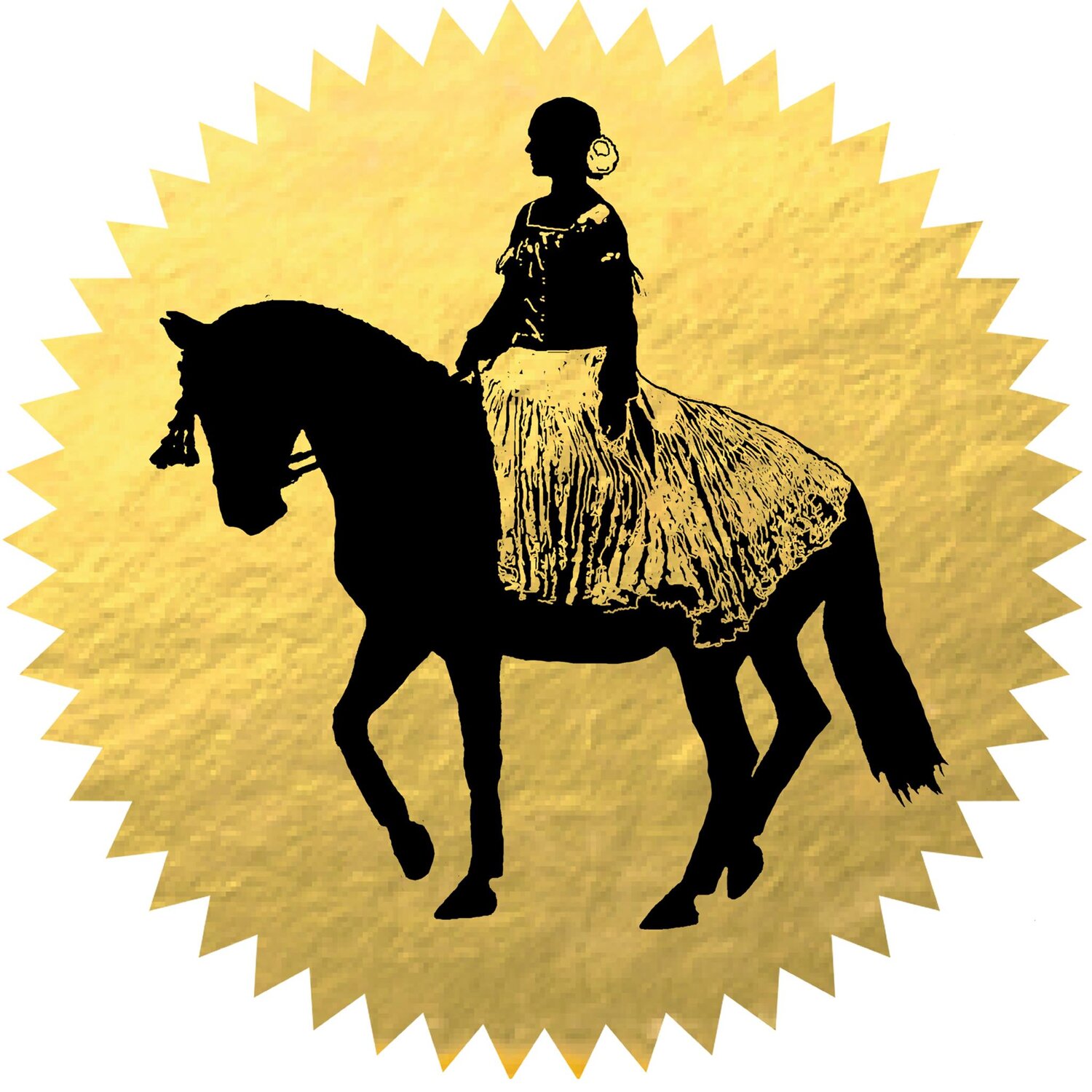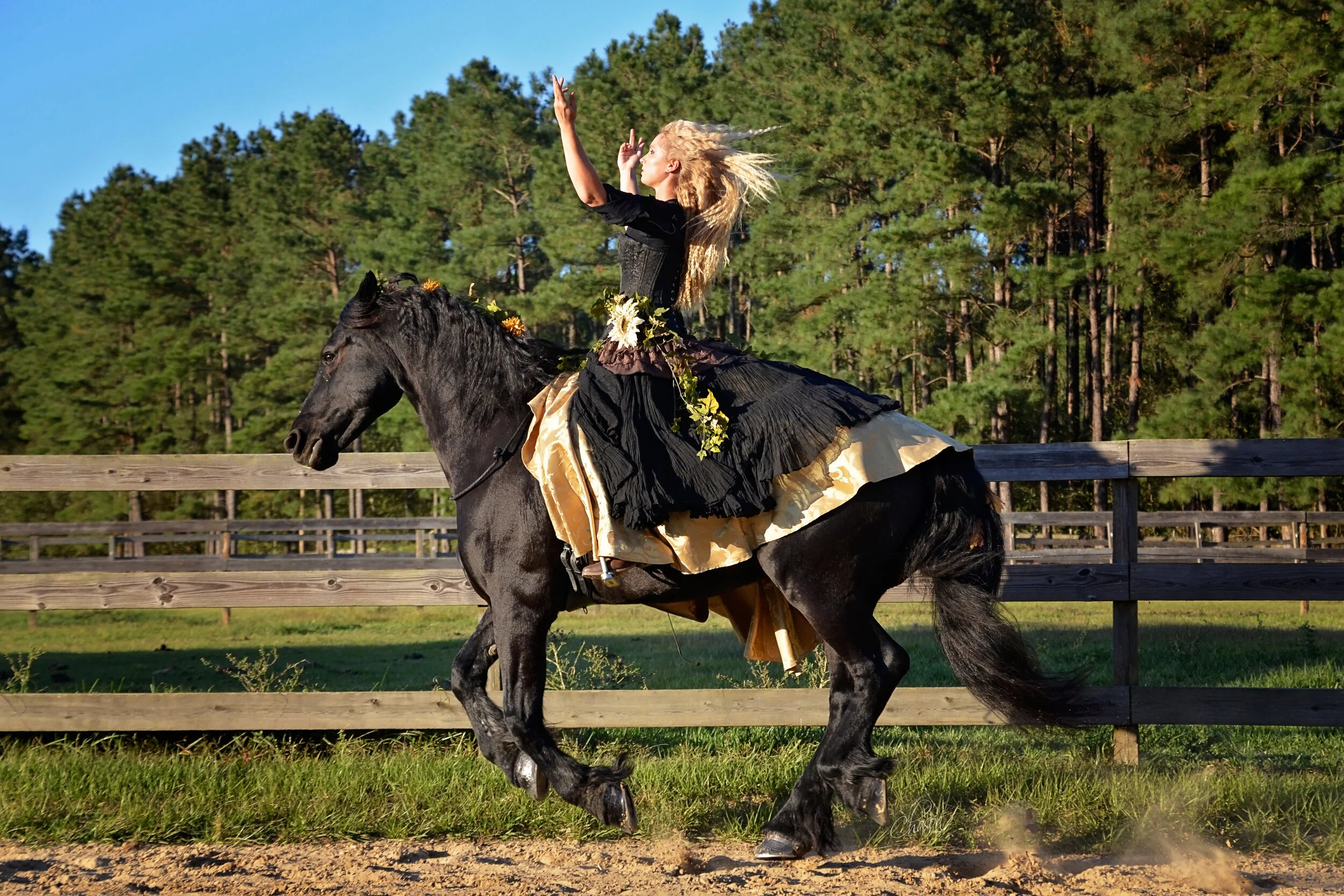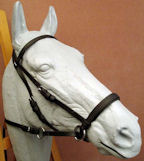FALL 2014
Julio and Jessica Mendoza called upon EquiChord, as they were excited to have several new horses for whom they wanted to develop freestyles - seven, to be exact. All the horses were of very high quality, ranging from First Level to Intermediare 1. They were also a wonderful array of breeds and personalities ranging from Friesians toOldenburgs. One in particular was a huge focus of our attention - a 2005 Oldenburg chestnut gelding named Chardonnay. Julio had set a goal of qualifying for the 2015 Pan Am Games. In order to achieve this, he had to compile his qualifying scores by the end of May - to include a freestyle score. For us, this was a definite challenge. Since we strongly believe in having plenty of time to practice and perfect each freestyle, regardless of the level, our time was already rapidly ticking away.
DECEMBER 2014
When we first met with Julio and Jessica to discuss their horse, they brought us a video from a recent clinic. Chardonnay (or Chardy, as he is known by his family and fans) was a new acquisition for Julio, and he was just starting to work with him. Chardy was beautiful, and you could certainly see that he was extremely talented and expressive. However, he was very uneven - so much so that his trot was extremely difficult to match to a steady BPM. There was no consistent rhythm, and there was lack of flexion to the right due to a former shoulder injury. Needless to say, we were a bit worried. Without rhythm, you cannot have the fundamentals of dressage or music. The Mendoza’s expressed that they wanted to use music that was more contemporary and easily recognizable. This always makes things even more challenging for us, because even though contemporary music is fun, much of it can be pretty uneventful since it is mostly a collection of loops with a vocal track. And, since we are limited to using only a few vocals throughout the course of a freestyle, contemporary music minus the underlying vocal tracks can sound more like muzak, or just a collection of never-ending loops. We put together a couple of samples for them, based on what we saw as possible fits, and passed along our recommendations. In our mind, once Chardy became more even and correct, he was going to develop into a lighter horse with a good staccato movement. Therefore, overly heavy or driving music would certainly overwhelm him. Chardy is also a very sensitive horse, so we wanted to ensure that he didn’t overreact to the music and become tense. Certain tonalities do not resonate well with some horses, so these considerations are always a part of the selection process. Jessica and Julio liked two of the roughs we put together, and together we ultimately decided on one. However, our choice was only a part of the selection process; we had to see if Chardy would respond positively to it.
JANUARY - 6.5 MONTHS TO THE PAN AM GAMES
We went to Julio’s farm to work with Chardy, and to get some insights on a few other horses. As we played the different pieces of music, we were looking for selections that would help Chardy find his rhythm. Julio had already made progress with him, and his cadence (i.e. how each footfall evenly matches the music’s rhythm) was improving. One of the selections we had on hand was a medley of U2’s music. We were all very excited to see how Chardy found his rhythm when we played the track! It was settled; that would be his music.
OUR TO DO LIST:
1. Finish the music and choreographic design
2. Run through it again in person to ensure the moves worked
3. Give Julio the music, the choreographic counts, and a voiceover so he may
practice the freestyle when off the horse.
FEBRUARY - 5.5 MONTHS TO THE PAN AM GAMES
Due to the scarcity of approved CDIs in our area, Julio needed to travel to Florida to get his qualifying scores. This gave us under a month to pull everything together. With his attention focused on acquiring the scores needed for qualifying, the freestyle fell into a lower priority level on the practice list. To make matters more challenging, Julio’s facilities back home did not have a regulation size indoor arena. So this made practicing the freestyle that much more difficult once he returned home. To help alleviate these challenges, Julio transported Chardy to a friend’s farm to use their indoor arena to practice. At this stage of the process, we still had not run through the entire test. It was truly amazing to see the progress Chardy was making. His gaits were stronger, and far more supple and rhythmic. However, he still was unable to consistently run through the freestyle. For us, this meant that we were not quite certain if the freestyle needed to be modified, or even worked. Since Chardy was still having problems rhythmical matching the steps, we couldn’t accurately count out the movements to the music. Based on what we had initially recorded, Chardy would need more counts than average to complete the movements. We had to go back to the studio and find a musically correct way to accommodate his odd sets of beats. As a result, we felt that it wouldn’t be prudent for Julio to try and show the freestyle while in Florida. Instead, we suggested that he afford Chardy more time to find himself. Once Julio had him where he needed him to be, we could introduce the freestyle again. However, time was a component that we had little of.
MARCH - 4.5 MONTHS TO THE PAN AM GAMES
During this month, Julio competed Chardonnay to Florida. In the meantime, we took this opportunity to work on the music and anticipate the changes that may need to happen in the choreography. We devised several plans to help support Chardy through the music, while ensuring that Julio had what he needed to perform the movements technically correct.
APRIL - 3.5 MONTHS TO THE PAN AM GAMES
Practice #1
The weather was nice enough to practice outside in the beautiful regulation-sized arena. Chardy was also getting better and better during this time. However, he seemed to be developing some tension during the freestyle. Frank and I were worried that the music may be causing the tension, and suggested that we might want to try something different since time was running out. Julio wanted to work through the music, so he began playing the music for Chardy in the barn every night. Julio also noted that he might be causing the tension himself, as he had not had enough time to listen to the music and voiceover files in earnest, or really focus on learning the test. There was just so much time in each day, and Julio and Jessica were extremely careful not to overwork Chardy. We asked Julio to ride through the test without the music; to perform the movements in a way that he felt was the most comfortable, and to do them as technically perfect as possible. We filmed the ride and took the tape back to the studio to score the music underneath it.
OUR TO DO LIST:
1. We make some more tweaks to the choreography and the music.
2. We sent Julio a new count sheet and the video with adjusted music so he could see (as well as hear) the cues and where each should fall matching his ride. We were happily surprised to see that it fit almost perfectly - and Julio needed to see that. All that was needed was enough practice time so that both horse and rider could feel confident in what they were doing. At this stage, they needed to trust each other and the music.
















































